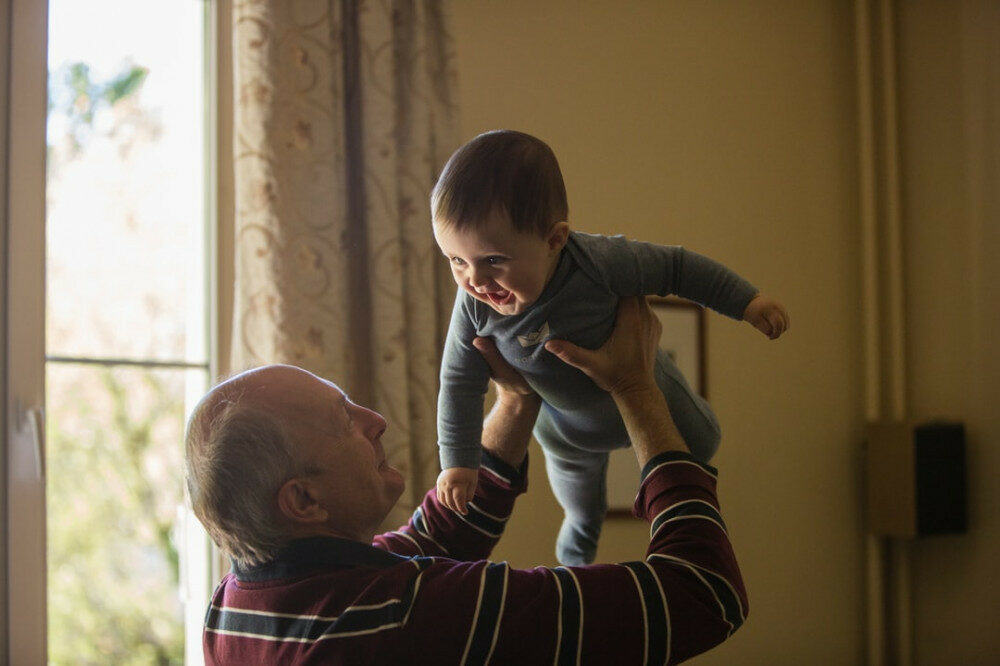As people go into lockdown or self-isolate around the world, it’s especially important to stay connected with family and friends. If your children are home from school right now, here are a few ideas to keep them virtually connected to friends and family members and encourage their creativity in the process.
Children’s Creative Project Menu
1. Conduct a grandparent interview

If you don’t have grandparents, interview an elderly relative or contact a nursing home and see if you can have a video chat with a resident, especially one without a family. Brainstorm a list of questions to ask. Here are some examples:
- Tell me about where you grew up.
- Who did you play with when you were little?
- What were your favorite games to play?
- Did you watch TV? What shows did you watch?
- Did you have a favorite toy? What was it?
- Did you play or watch any sports?
- Tell me a funny story about Mom (or Dad) when she/he was little?
- Tell me a story about your family?
- What important historical event happened during your childhood?
- What was your favorite invention and why?
For more question ideas, check out this post from RedTricycle.
Record the conversation. One day, you’ll be glad you did.
2. Schedule a virtual performance
Does your child play an instrument? Is he missing a recital? Never fear, you can still motivate him/her to practice by scheduling a virtual performance. Choose a date to call the grandparents or use Zoom or another platform and invite the whole family to watch while your child performs his/her piece.
Is your child missing soccer or baseball practice right now? Have your child show off his/her hitting/scoring skills while you record a practice session in the backyard or a large, open space. This will motivate your child to work hard to master a skill to showcase in the video.
Does your child sing or take dance or gymnastics classes? Have your child create a routine to perform live or on video and share it with the relatives.
This is a way to keep your child accountable if they must practice or master new skills. Knowing they will be performing live or on camera will give them extra motivation to do their best.
Consider creating costumes or dressing up for the performance as well.
3. Create a variety show to record and share
Back in the early 80s, my grandfather bought my dad one of the early VHS video recorders. It was huge and had to be mounted on a large tripod. To show his appreciation, my father produced an annual variety show starring my little sister and me. School choir performances, pet tricks with our beagle, Barney, dance routines in ill-fitting tutus, and amateur renditions of Little Orphan Annie songs were all included in the videos. My sister and I loved performing and my grandpa seemed to genuinely appreciate our eclectic offerings.
Consider encouraging your children to create their own variety show. Record it and share. The more eclectic the better. Allow them to showcase their unique strengths and talents. If your child likes to tell jokes, have him or her create a stand-up comedy routine. If you have a trampoline, encourage them to come up with a bouncy choreography.
Google a few good examples of talent showcases/variety shows to give your children some ideas and then send them off to see what they create.
4. Put on a puppet show
When my children were little, I used to put on a puppet show by ducking behind the sofa and then using finger puppets or homemade puppets to tell funny stories. I used paper Halloween pumpkins on Popsicle stick puppets to perform “5 Little Pumpkins” and I sang Christmas songs with my Santa and reindeer finger puppets. The sillier the stories and voices, the better. My children would then copy me and make up funny puppet shows of their own. My eldest went through a phase of making superhero puppets out of construction paper and puppet theaters out of cardboard boxes.
Putting on a puppet show is a great way to get your kids to demonstrate their understanding of a story they’ve read. This can be the follow-up to a language arts lesson. Or, they can use their imaginations to come up with their own story ideas.
5. Have a virtual art reception
Encourage your children to draw, paint and sculpt. Figure out a way to display their creations. Invite the relatives to a virtual art reception. The children can take them on a tour of your home museum and share their art. You can also do this with Lego creations or any other building sets. Spend the next few weeks creating and then schedule a day for your virtual art reception.
6. Online story hour
Tell your child to select a favorite picture book to read to friends or relatives online. Have them practice reading aloud using expression. Show them how to hold up the book so their audience is able to see the pictures. When they’re ready, invite friends and family to an online story hour.
Use online story hour as an opportunity to deepen important literary skills.
- Predict: Have your child show the front cover of the story and ask the relatives to make a prediction as to what the story is about. Ask relatives why they’ve made this prediction. By teaching children to ask others for predictions, it will reinforce their own knowledge of making plausible predictions.
- Connect: As your children read, have them stop occasionally and ask the relatives if they can make a self-to-text connection. Does the story remind them of something from their lives? Or, see if they can make a text-to-text connection. Is the story similar to another story they’ve read?
- Identify the main character and setting: Ask the relatives who the main character of the story is and where the story takes place?
- What is the problem/source of conflict in the story?
- What is the solution?
By setting up an online story hour, you can have your children become the teachers and learn to ask questions teachers often ask pupils about stories. This will deepen their understanding of literary constructs and help them develop important reading comprehension skills.
Conclusion
Even though you’re stuck at home right now, you can still stay virtually connected to friends and family. Use this as an opportunity to encourage your children to be creative and share their accomplishments online.
Stacy Ross shares some fun ways to connect with grandparents via technology in this post. There are a few new apps mentioned that I’ve never used before like Magisto, FXGuru, and PhotoFunia. So, have fun exploring new technologies to strengthen relationships. Make memories online.
I’ve created a menu of creative project ideas here:
Copy of Children’s Creative Project Menu by Rebecca Grant
If you liked this post, you may like these:








